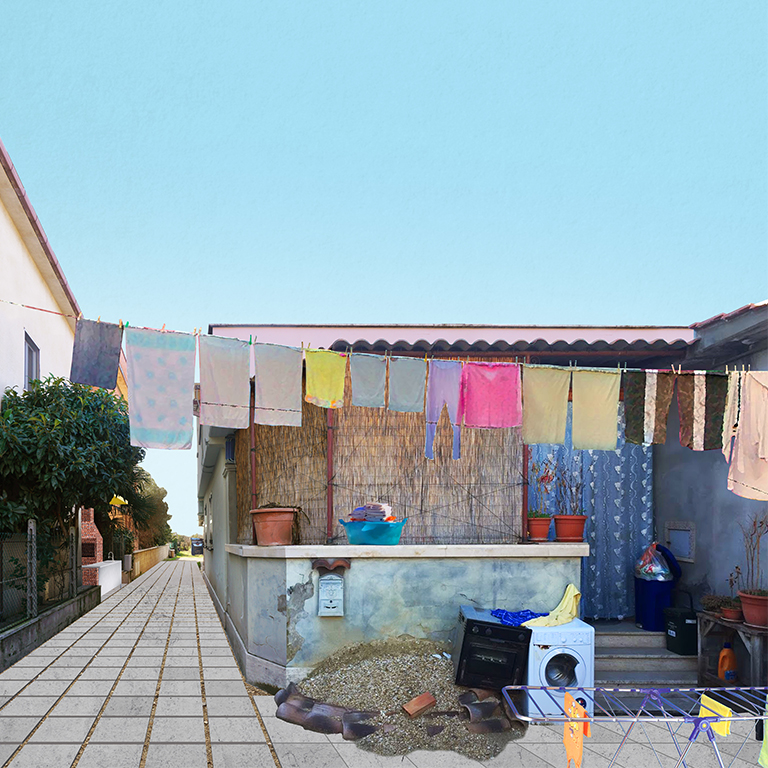Type
Housing
Location
Roman Agro, Italy
Size
732,001 sm / 73 ha
Date
Spring 2019




















Context
Built in the late 1980s by the municipality of Guidonia Montecelio in the north-east Roman Agro, Albuccione was one of the last social housing projects to be built in Rome in an era when the government used social housing to transition residents for private homeownership rather than advocate for communal forms of living. To the south are two informal communities where settlement has occurred along slender, linear agrarian fields. The physical constraint of the linear lots and the lack of infrastructure for these settlements have forced residents to build informal secondary structures to perform labor that their primary residence cannot accommodate. As residents within the informal areas are typically retired or self-employed in small scale agriculture and manufacturing, residents perform both productive and domestic labor within these sheds.
Thus, Albuccione is a settlement where the household has been disassembled into various elements, scattered across the site, and reconstituted in diffuse form. With a third of its population over the age of sixty-five and an even greater number forced to partially dwell in shoddily-built structures, Albuccione is facing a crisis of care. However problematic in its current state, this deconstructed condition of domesticity also presents an opportunity to reinvent reproductive labor as a shared public ritual rather than one belonging to the private domestic sphere.
Project
The project reconstitutes the household as a linear strip of collective rooms for the commoning of reproductive labor and care. The project first implements a ‘comb’ structure of platforms along a linear path, which provides common space between existing homes for shared domestic activity. This subdivision provides structure for densification through a new model of communal housing: single-story assisted living units with communal spaces where residents care for one another and engage in shared agricultural and industrial production.
Though this process of commoning operates as a ground-up protocol, beginning with the agreement between individual families to share basic domestic resources and labor, it can eventually reorganize the structure of each settlement as a whole according to the logic of communal care and provides the settlement with a legible infrastructure for new communal rituals of domesticity.
Yale School of Architecture
Advanced Design Studio II
Critic: Pier Vittorio Aureli, Emily Abruzzo
In collaboration with Jeffrey Liu
Nominated and Published in Retrospecta 42
Advanced Design Studio II
Critic: Pier Vittorio Aureli, Emily Abruzzo
In collaboration with Jeffrey Liu
Nominated and Published in Retrospecta 42